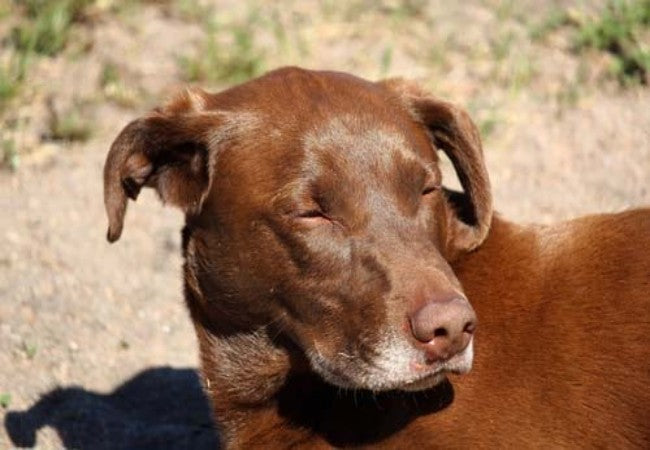Vet’s 2025 Guide to Canine Pemphigus in Dogs Autoimmune Skin Disease Explained 🐶

In this article
Vet’s 2025 Guide to Canine Pemphigus in Dogs: Autoimmune Skin Disease Explained 🐶
By Dr. Duncan Houston BVSc
💡 Introduction
Pemphigus is a group of autoimmune skin diseases—the most common being pemphigus foliaceus, followed by rarer forms: pemphigus erythematosus, vulgaris, vegetans, and paraneoplastic. Itinerant pustules, erosions, crusts, and sometimes blisters occur due to the body's immune system attacking skin adhesion proteins—especially desmogleins—leading to soil loss of integrity and painful lesions.
1. Pemphigus Variants in Dogs
- Pemphigus foliaceus (PF): most common. Superficial pustules and crusts around face, ears, paw pads, and occasionally trunk.
- Pemphigus erythematosus: mild PF variant—face/nose focused, sun-sensitive.
- Pemphigus vulgaris: severe. Blisters, erosions, and ulcers in deeper skin layers and mucocutaneous junctions (mouth, lips, genitals).
- Pemphigus vegetans: wart-like lesions, rare.
- Paraneoplastic pemphigus: linked to internal cancers; poor prognosis.
2. Who Is Affected?
- Any dog can develop pemphigus, but middle-aged adults are most commonly affected (~4–7 years).
- PF predilection in Akita, Chow, Doberman, Newfoundland, Collie, Cocker Spaniel, Dachshund, Schipperke.
- PE is often seen in Collie and German Shepherd breeds.
- Pv and vegetans occur rarely and without breed-typical predilection.
- Possible triggers include sun exposure and certain medications (e.g., penicillins, sulfa drugs, spot-on products).
3. Recognizing the Signs
Classic symptoms vary by variant:
- PF / PE: crusts, pustules, scaly erosions on nose, ears, paw pads, eyes.
- PV: deep ulcerations and painful mucosal involvement—blisters rupture easily.
- All types: lesion symmetry, pruritus or pain, and possible fever or lethargy in generalized cases.
- PF may involve paw pad hyperkeratosis and secondary infections.
4. Diagnosing Pemphigus 🧪
Definitive diagnosis requires:
- Skin cytology: acantholytic keratinocytes, neutrophils—supportive but not definitive.
- Skin biopsy: histopathology shows subcorneal pustules in PF, suprabasal blisters in PV.
- Cultures to exclude infection.
- Optional immunofluorescence research tests.
5. Treatment Protocols (2025) 💉
5.1 Induction Phase
- Corticosteroids: Oral prednisone 2 mg/kg/day or high-dose pulse therapy in severe cases.
- Immunosuppressants: cyclosporine, azathioprine, mycophenolate to reduce steroid dependence.
- Oclacitinib: steroid-sparing anti-pruritic option.
5.2 Maintenance Therapy
After remission, taper steroids gradually (≈25% reduction every 2–3 weeks), sustain remission with lowest effective dose and companion drugs.
5.3 Topical & Adjunctive Care
- Topical corticosteroids or tacrolimus for localized lesions.
- Antimicrobial baths (chlorhexidine), oral antibiotics for co-infections.
- Sun protection for facial/ear lesions.
6. Prognosis & Monitoring
- PF remission: 40–88% of dogs achieve complete control.
- PV/VE/PNP: require aggressive, lifelong immunosuppression; PV often has a guarded prognosis.
- Side effects: PU/PD, weight gain, infections—monitor with blood tests.
- Relapses common—long-term follow-up is crucial.
7. Home Care & Ask A Vet Support 🏡
- Track lesion changes, pruritus, and medication reactions via the app
- Set reminders for medications and recheck appointments
- Upload photos for remote review—assist vet-advised tapering
- Receive alerts for emergency signs—new ulcers, systemic illness
- Guide on bathing routines, sun protection, and ear/foot care
8. When to See the Vet Immediately 🚨
- No improvement after 4–6 weeks
- Signs of systemic illness or infection
- Medication side effects like vomiting, depression, excessive drinking
- New lesion flare during tapering
🔍 Summary Takeaways
- Pemphigus encompasses five autoimmune skin types—PF is most common.
- Diagnosis requires biopsy and exclusion of infections.
- Treatment relies on immunosuppressive therapy, combining steroids and steroid-sparing drugs.
- Prognosis is generally favorable for PF; more guarded for deeper forms.
- Home care and long-term monitoring via Ask A Vet support health and compliance.
🩺 Conclusion ❤️
Pemphigus is a serious but manageable skin disease in dogs. With modern therapy in 2025—including smart immunosuppression and diligent follow-up—most pets can achieve remission and good quality of life. Ask A Vet empowers owners with guidance, compliance tools, and real-time support throughout treatment.🐾✨
Dr Duncan Houston BVSc – blending medical expertise with compassionate pet care.
Visit AskAVet.com and download the Ask A Vet app for tailored tracking, reminders, and veterinary guidance through your dog’s treatment journey. ❤️






